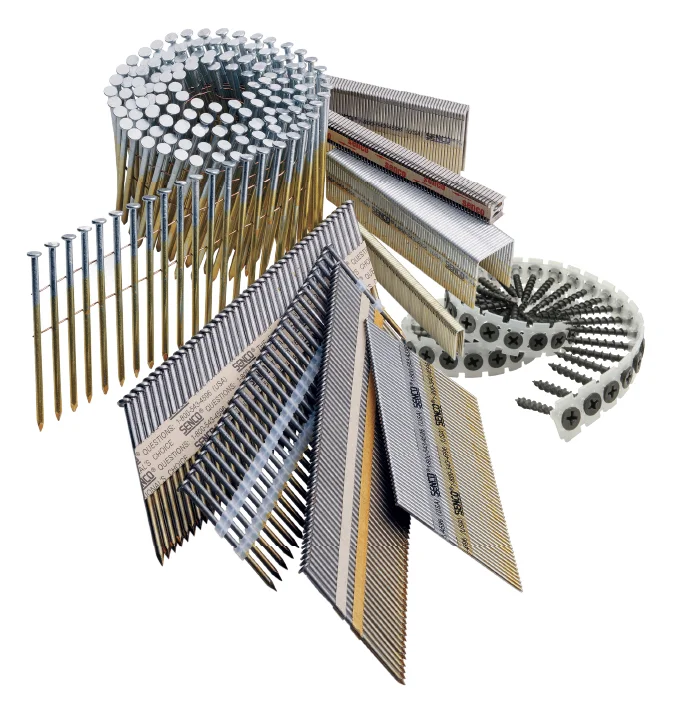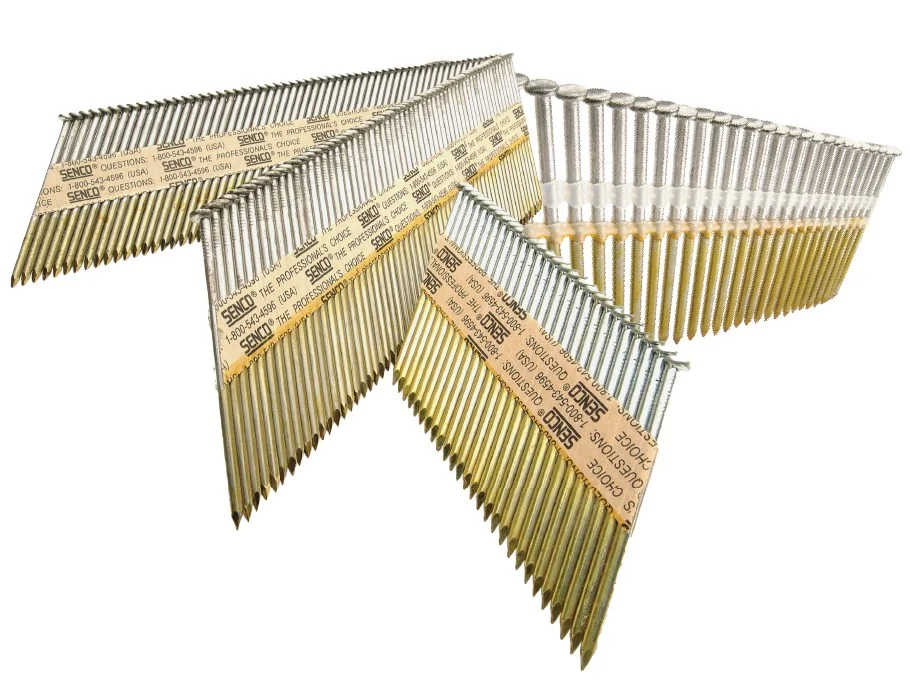Anatomy of a Fastener – Nails Explained

(While nails are most often used in wood applications, they can also be used to fasten materials to concrete, masonry, or metals. This article and those to follow focus on wood fastening and provide information on nail sizes, shapes, and uses.)
There are three primary components of a nail: the head, shank and point. When deciding which fastener is right for you, each of these components should be considered.
Made of metal, nails are either cut from a flat stock or pulled from a round wire. At SENCO, we use the wire draw method to control every aspect of the process to ensure we produce a clean and consistent product.
Nail Composition
The heads of nails (or their absence) are designed to meet the load bearing requirements of various applications as well as for aesthetics. Interior framing, for instance, requires specific load handling capacities, and large exposed heads are commonplace. Stain-grade detailing work, on the other hand, benefits from a finished appearance that hasn’t been ruined with unsightly nail heads.
The shank is the long slender portion of the nail. Nails hold materials together through the friction created between the shank and the material. Smooth shanks are the most common due to their ease of driving in framing, trim and moldings. Some shanks may have rings or grooves to help increase holding power in applications such as roof or wall sheathing, where withdrawal resistance is mandated by code.
The nail point is the tapered portion at the end of the shank that wedges a material apart to allow the nail to be driven into the material. At SENCO we manufacture diamond point and chisel point nails. For general purposes, the most common is the diamond point as it drives easily and offers the most holding power. Chisel points are preferred in trim work as they help reduce splitting wood.
Nail Coating
While many nails come without a special coating, there are some common coatings that are used regularly. Here are some things to think about regarding coatings:
Hot-dipped galvanized coatings provide extra resistance to rust. Where moisture may cause deterioration of the fastener, galvanized nails should be used. In addition, galvanized nails are recommended for pressure-treated wood because copper is part of the pressure treatment. Due to galvanic action, the copper would corrode metal nails without the galvanized, zinc coating.
Vinyl coatings serve two purposes. First, the vinyl makes the nail easier to drive by reducing friction. When driven, the vinyl melts. After cooling, the vinyl adheres the nail to the wood, which makes it harder to remove. We employ our own formulated vinyl coating called Sencote™.
While not a coating, stainless steel nails are a common option and are the most resistant to corrosion.
Next month: Choosing the right nail for your tool and application

